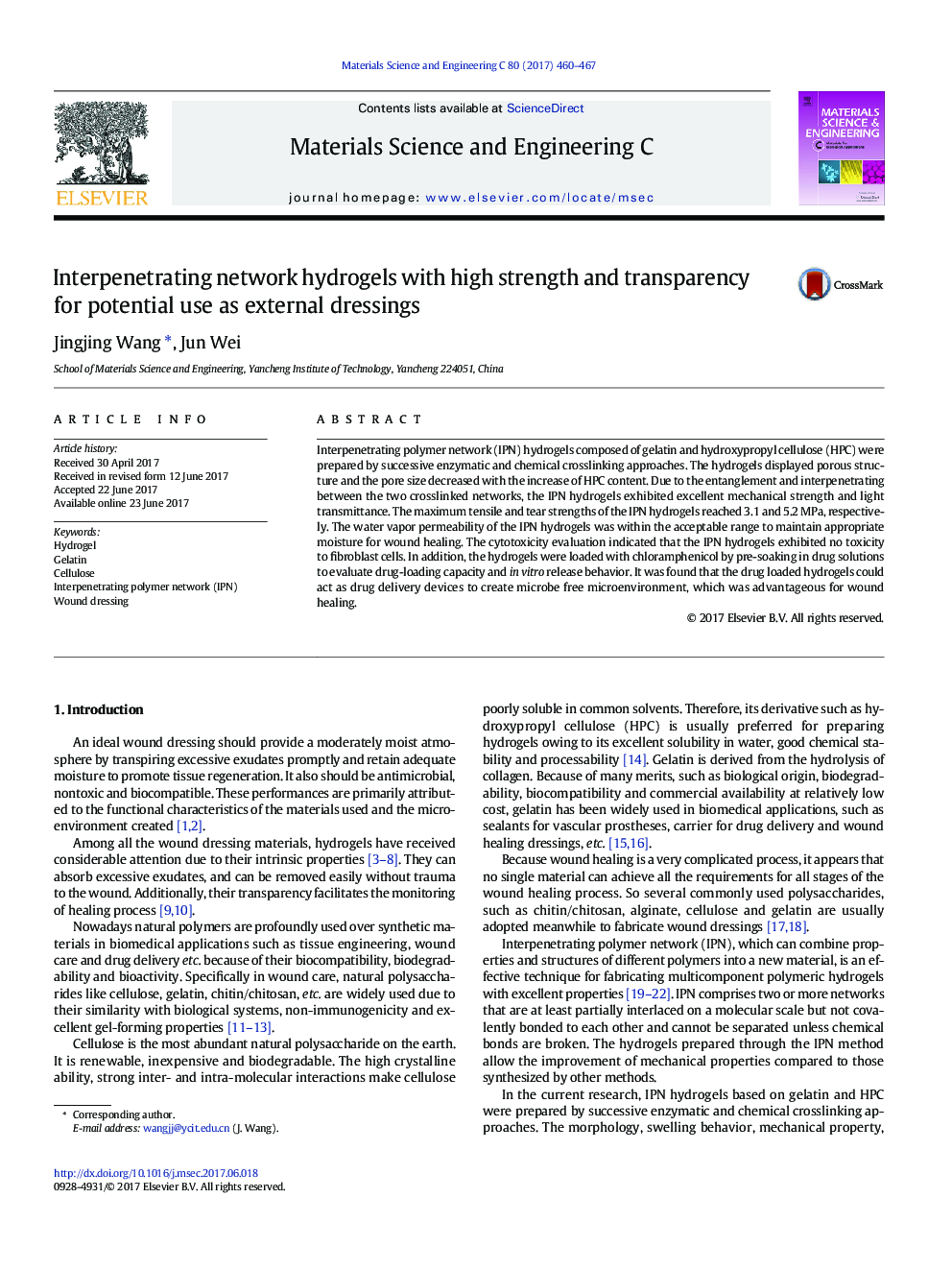| Article ID | Journal | Published Year | Pages | File Type |
|---|---|---|---|---|
| 5434340 | Materials Science and Engineering: C | 2017 | 8 Pages |
â¢IPN hydrogels were prepared by successive enzymatic and chemical crosslinking approaches.â¢The IPN hydrogels exhibited excellent mechanical strength and light transmittance.â¢The IPN hydrogels exhibited no toxicity to fibroblast cells.â¢The drug loaded hydrogels could act as drug delivery devices to create microbe free microenvironment.
Interpenetrating polymer network (IPN) hydrogels composed of gelatin and hydroxypropyl cellulose (HPC) were prepared by successive enzymatic and chemical crosslinking approaches. The hydrogels displayed porous structure and the pore size decreased with the increase of HPC content. Due to the entanglement and interpenetrating between the two crosslinked networks, the IPN hydrogels exhibited excellent mechanical strength and light transmittance. The maximum tensile and tear strengths of the IPN hydrogels reached 3.1 and 5.2Â MPa, respectively. The water vapor permeability of the IPN hydrogels was within the acceptable range to maintain appropriate moisture for wound healing. The cytotoxicity evaluation indicated that the IPN hydrogels exhibited no toxicity to fibroblast cells. In addition, the hydrogels were loaded with chloramphenicol by pre-soaking in drug solutions to evaluate drug-loading capacity and in vitro release behavior. It was found that the drug loaded hydrogels could act as drug delivery devices to create microbe free microenvironment, which was advantageous for wound healing.
